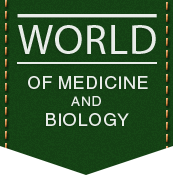| About the author: |
M. P. Melnychuk |
| Heading |
CLINICAL MEDICINE |
| Type of article |
Scentific article |
| Annotation |
The article deals with the problem of diagnosing prostatic intraepithelial neoplasia as a precancerous process. Data on the expression of proliferation markers (Ki-67) and invasion (p63) in patients with prostatic intraepithelial neoplasia of high and low degrees are analyzed. The total of 93 patients with prostatic intraepithelial neoplasia who were studied for Ki-67 and p63 expression were examined. High-grade prostatic intraepithelial neoplasia has been shown to have a greater potential for proliferation and invasive growth than low-grade prostatic intraepithelial neoplasia. In patients with high-grade prostatic intraepithelial neoplasia, more intensive expression of Ki-67 was observed by 24 % more frequently, and by 11 % pronounced expression of Ki-67 than in patients with low-grade prostatic intraepithelial neoplasia. P63 expression was higher in cases of low-grade prostatic intraepithelial neoplasia. In patients with low-grade prostatic intraepithelial neoplasia, intense p63 expression was by 25 % more common and pronounced p63 expression was by 14 % more common. The data suggest the need for in-depth examination of patients with high-grade prostatic intraepithelial neoplasia to prevent malignancy. |
| Tags |
high and low degree prostatic intraepithelial neoplasia, immunohistochemical markers |
| Bibliography |
- Kovylina MV., Prylepskaia VА, Sergeiko IP. Prognosticheskoye znachenie immunogistokhimicheskikh markerov Ki-67 i p63 posle radikalnoy prostatektomii. Oncourologiya 2014; 1:49–52. [in Russian]
- Saidakova NO, Hryhorenko VM. Rak prostaty: zakhvoriuvanist v Ukrayini. Urolohiya 2015; 19 (3):48–54. [in Ukrainian]
- Adisa J, Chukwudi E. Expression of some selected cytokeratins and Ki67 protein in prostatic tumor: can these be used as tumor markers. Pan Afr Med J. 2015; 20:46–50.
- Bastarós J, Placer J, Celma A, Planas J, Morote J. Current significance of the finding of high grade prostatic intraepithelial neoplasia in the prostate biopsy. Actas Urol Esp. 2014; 38(4):270–5.
- Bostwick D Prostatic intraepithelial neoplasia is a risk factor for cancer. Semin Urol Oncol 1999;17:187–198.
- Cao W, Li F, Yao J, Yu J. Prostate specific G protein coupled receptor is associated with prostate cancer prognosis and affects cancer cell proliferation and invasion. BMC Cancer. 2015;18:908–915.
- Ferlay I, Shin H. GLOBOCAN 2012: Cancer incidence and mortality worldwide. IARC cancer base 2012;10:47–58.
- Goldstein J, Borowsky A, Goyal R, Roland J, Arnold S, Gellert L. MAGI-2 in prostate cancer: an immunohistochemical study. Hum Pathol 2016; 52:83–91.
- Goldstein J, Goyal R, Roland J, Gellert L. MAGI-2 Is a Sensitive and Specific Marker of Prostatic Adenocarcinoma: A Comparison With AMACR. Am J Clin Pathol 2016; 146(3):294–302.
- Haffner M, Barbieri C. Shifting paradigms for high-grade prostatic intraepithelial neoplasia. European Urology 2016;69(5):831–3.
- Kanyong P, Rawlinson S, Davis J. Immunochemical Assays and Nucleic-Acid Detection Techniques for Clinical Diagnosis of Prostate Cancer. J Cancer 2016; 10(5):523–31.
- Magi-Galluzzi C. Prostate cancer: diagnostic criteria and role of immunohistochemistry. Mod Pathol 2018; 31:12–21.
- Munireddy M, Girish H, Prasad K, Rajareddy H. Prevalence of Prostatic Intraepithelial Neoplasia in Patients Diagnosed as Benign Prostatic Hyperplasia Underwent Transurethral Resection. International Journal for Scientific Study 2016; 3:134–8.
- Patel P1, Nayak JG, Biljetina Z, Donnelly B, Trpkov K. Prostate cancer after initial high-grade prоstatic intraepithelial neoplasia and benign prostate biopsy. Can J Urol. 2015; 22(6):8056–62.
- Verma R, Gupta V, Singh Y. Significance of p53 and ki-67 expression in prostate cancer. Urol Ann. 2015;7(4):488–493.
|
| Publication of the article |
«World of Medicine and Biology» №2(76), 2021 year, 089-093 pages, index UDK 616.6-006-07 |
| DOI |
10.26724/2079-8334-2021-2-76-89-93 |
